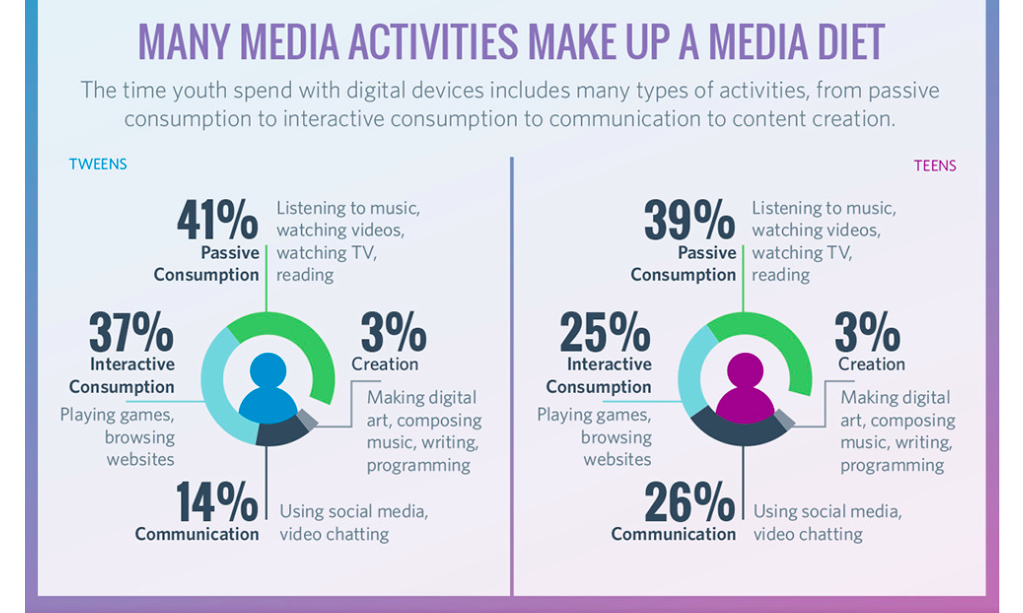Two recent surveys have shown that children and teens are spending an increasing amount of time using electronics and media.
It’s “off the charts,” according to Common Sense Media, which surveyed the media habits of youth ages 8 to 18 this year.
How can out-of-school time programs respond?
Katie Giles, project manager at the Harvard Prevention Research Center at the Harvard School of Public Health, has some answers.
But first, the numbers:
Teenagers spend more than 6½ hours per day in front of electronic screens, according to the survey by Common Sense Media. Their total media use per day, including reading print publications for pleasure and listening to music, is about nine hours.
Tweens average more than 4½ hours of screen time per day and about six hours of total media, according to the survey.
Research published in October in the journal Pediatrics found that children age 2 spent as much time on mobile devices as on television, and most children have their own device by age 4.
What about after school?
After-school providers vary widely in the amount of screen time in their program, Giles said, although there are no good measures. Some programs don’t have computers or TVs and so have no screen time. Others may have a weekly movie. Others may let kids have unlimited access to the Internet.
After-school providers can assess the amount of screen use in their programs using the Out of School Nutrition and Physical (OSNAP) Activity Initiative, a project Giles manages at the Harvard School of Public Health Prevention Research Center.
“We have them do a daily assessment for a week,” Giles said. The online assessment at the OSNAP website measures physical activity, screen time and the provision of healthy food and beverages.
“They can take a look and see what is really happening,” Giles said.
Standards created by the Healthy Out-of-School Time Coalition spearheaded by NIOST call for zero television and movies in after-school programs. The standards have been adopted by the National Afterschool Association. They limit digital time to less than one hour per day in after-school programs, and that time is either to be used doing homework or with devices or programs that engage kids in physical activity.
After assessing their program, administrators can set up an action plan to replace noneducational screen time with other activities, Giles said.
The site also has information that programs can provide to parents. It offers ideas for setting up a written policy around screen time.
A tip sheet from OSNAP suggests alternatives to TV and computer games. Bring back board games, it suggests. Use parent settings on computers to set time limits. Put on a physically active video game like “Dance Dance Revolution” or other fitness games.
“We even recommend that they turn on music so kids can dance,” Giles said.
Provide reading time and time for arts and crafts, she said.
In addition, OSNAP’s Food and Fun Afterschool curriculum for children ages 5 through 12 provides material about healthy eating and physical activity that after-school providers can incorporate into their programs. The curriculum has 11 units and more than 70 activities.
































